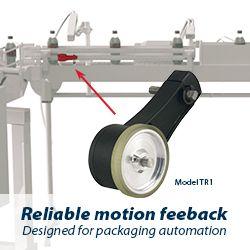AC CANopen Servo Drive capable of control AC induction & brushless motors
It can operate as a frequency inverter with programming capabilities allowing traditional V/Hz control method.
uly 2012. Ingenia Motion Control announces the release of the new i124 AC Servo Drive, capable of driving several motor types including AC induction and permanent magnet brushless motors with output power up to 1 HP.  It can operate as a frequency inverter with programming capabilities allowing traditional V/Hz control method.
It also incorporates an active Power Factor Corrector (PFC) for minimal harmonics together with a high performance dual stage line filter. This avoids the use of huge and expensive external line filters required for most commercial AC Servo Drives.
i124 accepts a wide set of external command sources (including CANopen network). It also can work in stand-alone mode executing a pre-stored program.
i124 supports many feedbacks for position/velocity and torque control, including: Incremental encoder, Hall sensors, Tacho, Resolver and analog Input/ potentiometer.
The Serial interface for control panels allows direct configuration using push buttons and parameter display on LED/LCD.
Features at a glance:
*Power:Â 2Ph 190-250 VAC, 750 W
*Control:Â Slave or stand-alone servo drive
*Power factor with PFC : ≥ 0.90
*Supported Motors: DC brush, brushless trapezoidal , brushless sinusoidal, AC induction motor
*Feedbacks: Incremental encoder, Hall sensors, Tacho, Resolver, analog Input/ potentiometer
*Communications: RS232 / CANopen
For more information please visit : http://www.ingeniamc.com/En/-custom-ac-servo-drive
Featured Product

Model TR1 Tru-Trac
The Model TR1 Tru-Trac® linear measurement solution is a versatile option for tracking velocity, position, or distance over a wide variety of surfaces. An integrated encoder, measuring wheel, and spring-loaded torsion arm in one, compact unit, the Model TR1 is easy to install. The spring-loaded torsion arm offers adjustable torsion load, allowing the Model TR1 to be mounted in almost any orientation - even upside-down. The threaded shaft on the pivot axis is field reversible, providing mounting access from either side. With operating speeds up to 3000 feet per minute, a wide variety of configuration options - including multiple wheel material options - and a housing made from a durable, conductive composite material that minimizes static buildup, the Model TR1 Tru-Trac® is the ideal solution for countless applications.
